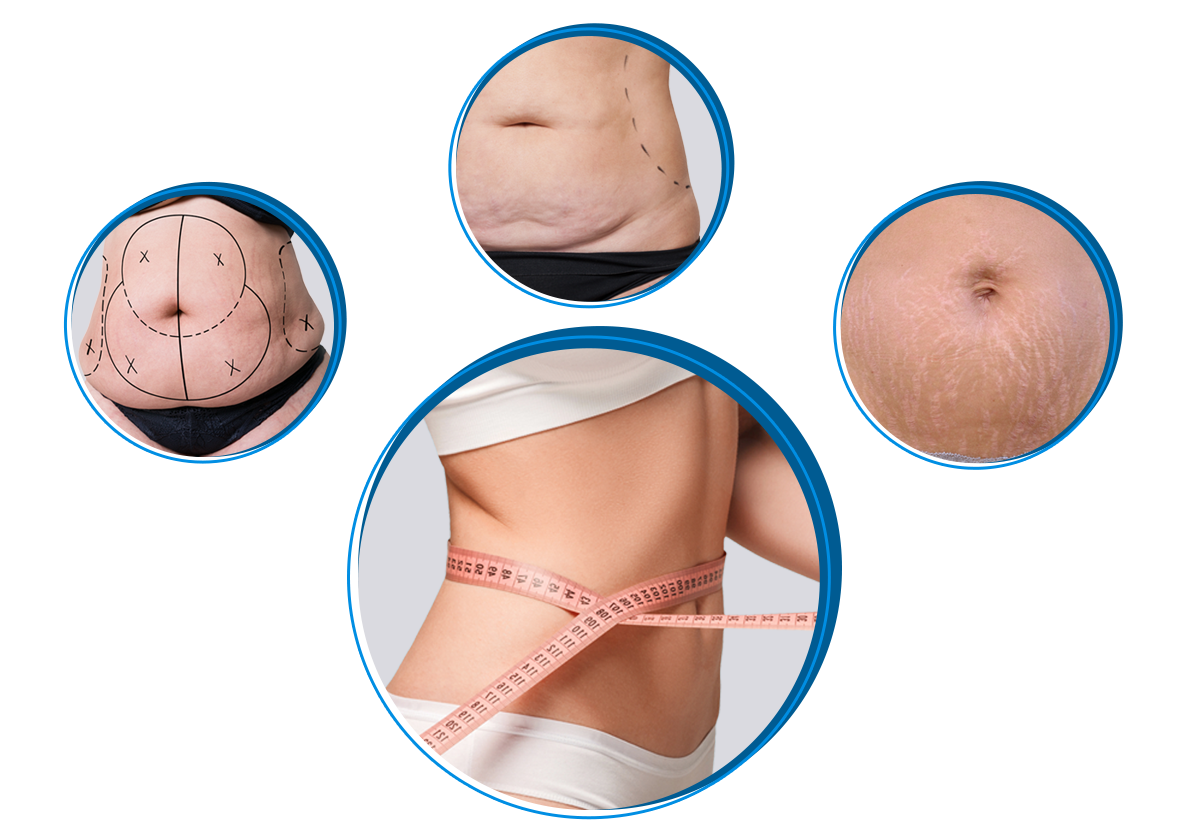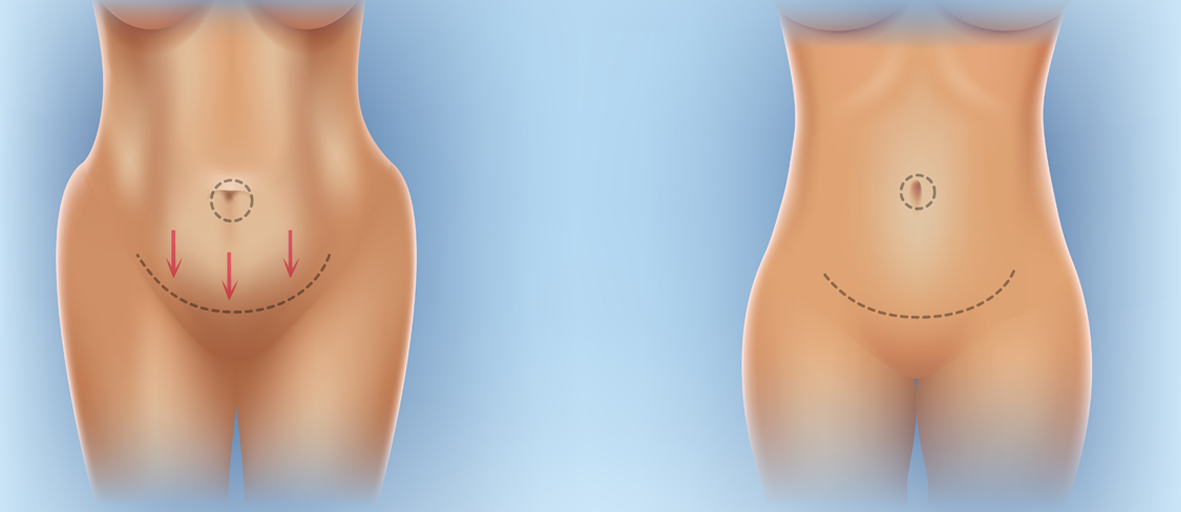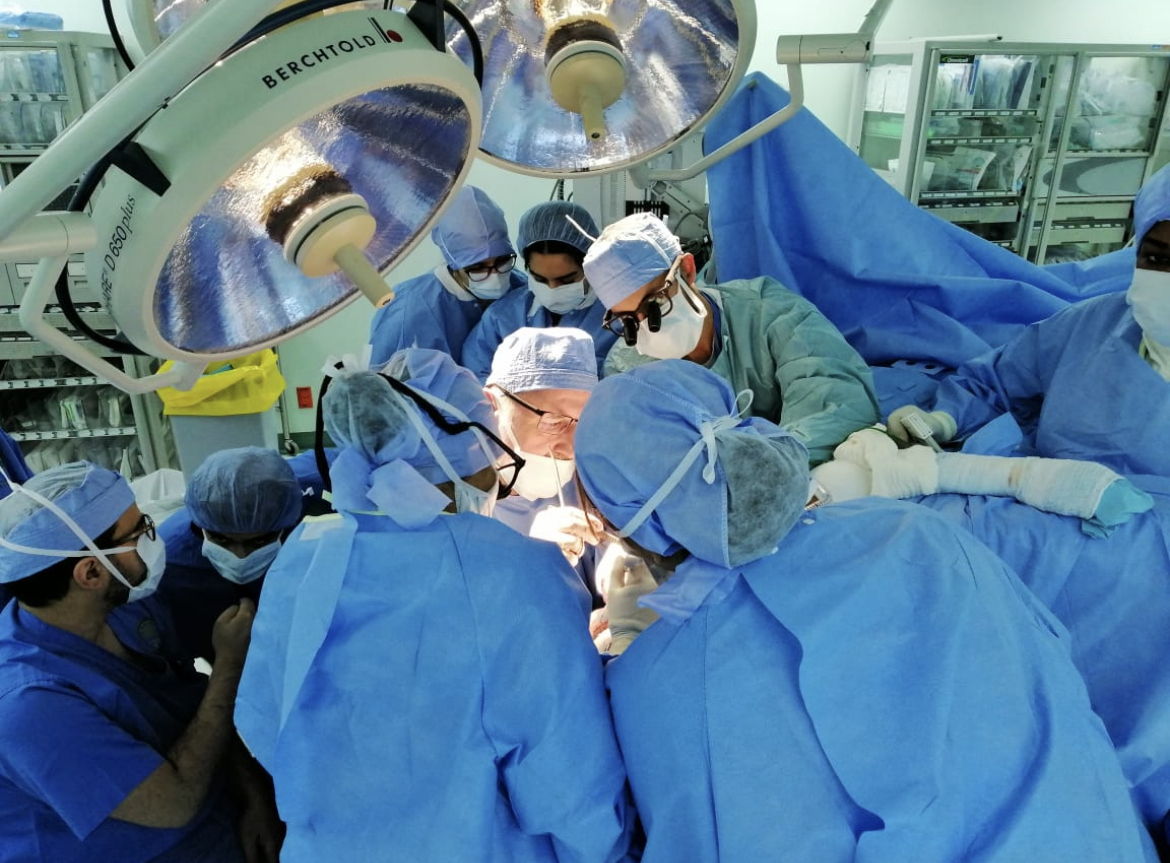
Tummy Tuck
What is a tummy tuck?
Tummy tuck surgery, also known as abdominoplasty, removes excess fat and skin and, in most cases, restores weakened or separated muscles creating an abdominal profile that is smoother and firmer.
A flat and well-toned abdomen is something many of us strive for through exercise and weight control. Sometimes these methods cannot achieve our goals.
Even individuals of otherwise normal body weight and proportion can develop an abdomen that protrudes or is loose and sagging. The most common causes of this include:
- Aging
- Heredity
- Pregnancy
- Prior surgery
- Significant fluctuations in weight
What tummy tuck surgery can’t do
A tummy tuck is not a substitute for weight loss or an appropriate exercise program.
Although the results of a tummy tuck are technically permanent, the positive outcome can be greatly diminished by significant fluctuations in your weight. For this reason, individuals who are planning substantial weight loss or women who may be considering future pregnancies would be advised to postpone a tummy tuck.
A tummy tuck cannot correct stretch marks, although these may be removed or somewhat improved if they are located on the areas of excess skin that will be excised.
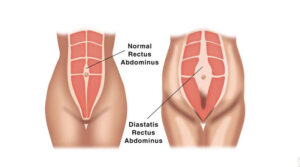
Who is a good candidate for tummy tuck surgery?
A tummy tuck is a highly individualized procedure. You should do it for yourself, not to fulfill someone else’s desires or to try to fit any sort of ideal image.
In general, you may be a good tummy tuck candidate if:
- You are physically healthy and at a stable weight
- You have realistic expectations
- You are a nonsmoker
- You are bothered by the appearance of your abdomen

What are the steps of a tummy tuck procedure?
A tummy tuck procedure includes the following steps:
Step 1 – Anesthesia
Medications are administered for your comfort during the surgical procedures. The choices include intravenous sedation and general anesthesia. Your doctor will recommend the best choice for you.
Step 2 – The incision
A full tummy tuck requires a horizontally-oriented incision in the area between the pubic hairline and belly button.

The shape and length of the incision will be determined by the amount of excess skin. Once the abdominal skin is lifted, the underlying weakened abdominal muscles are repaired.
A second incision around the navel may be necessary to remove excess skin in the upper abdomen.

The upper abdominal skin is pulled down like a window shade. The excess skin is trimmed and the remaining skin is sutured together. A new opening for the belly button is created. The belly button is popped through to the surface and sutured into position.
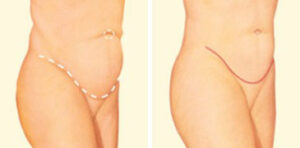
Step 3 – Closing the incisions
Sutures, skin adhesives, tapes or clips close the skin incisions.
Step 4 – See the results
Your tummy tuck will result in a flatter, firmer abdominal contour that is more proportionate with your body type and weight.
What should I expect during my tummy tuck recovery?
During your tummy tuck recovery, dressings or bandages may be applied to your incisions, and you may be wrapped in an elastic bandage or a compression garment to minimize swelling and support your abdomen as it heals following surgery.
Small, thin tubes may be temporarily placed under the skin to drain any excess blood or fluid that may collect.
You will be given specific instructions that may include:
- How to care for the surgical site and drains
- Medications to apply or take orally to aid healing and reduce the potential for infection
- Specific concerns to look for at the surgical site or in your general health
- When to follow up with your plastic surgeon
Be sure to ask your tummy tuck surgeon specific questions about what you can expect during your individual recovery period:
- Where will I be taken after my surgery is complete?
- What medication will I be given or prescribed after surgery?
- Will I have dressings/bandages after surgery? When will they be removed?
- When will the stitches be removed?
- How will I bathe?
- How long will I wear the pressure garment?
- When can I resume normal activity and exercise?
- When do I return for follow-up care?
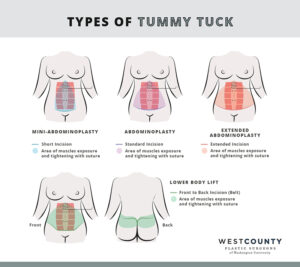
Types of Tummy Tuck
- Full Tummy Tuck.
- Mini Tummy Tuck.
- Extended Tummy Tuck.
- Fleur-De-Lis Tummy Tuck.
- Drainless Tummy Tuck.
- Tummy Tuck with Liposuction.
- Non-Surgical Tummy Tuck.

